I have been working very hard these last few weeks—a little too hard, at times. To break the monotony of laying code every day I elected to go for a proper ride yesterday. Since moving to Tainan I haven’t gone on any long rides whatsoever—so I geared up for a day on the road, preparing for almost any eventuality. I had several destinations in mind such as the badlands to the east of the city but struck out to the north on a whim, intending to make it to at least Chiayi City by sundown.
Now, I should preface this write-up by saying that this wasn’t even close to the most interesting ride I have been on in Taiwan, mainly because I kept to the flatlands of the Chianan Plain 嘉南平原, one of the most boring parts of Taiwan to experience on two wheels. It wasn’t quite as dull as my long ride from Lukang to Budai but that’s because I did my best to stay inland, though I never did manage to hit the foothills of the central range.
That being said, I still had a good time, and since I was quick to develop the photos, I thought I might share a little of what it’s like to go on a big ride through central Taiwan. Part of my reason for blogging is to share experiences like this—even if they aren’t the most amazing thing ever.
The first part of my ride involved getting out of Tainan City itself. To be honest, I haven’t really ventured outside of the more cultured and historic downtown core since moving here, and it was a bit of a shock to leave all that behind me after a mere 10 or 15 minutes on the road.
Before long I was mired in urban sprawl, baking under the tropical sun in the 32 °C heat, racing from one stop light to the next, choking on exhaust and an ever-changing variety of noxious gases emitted by small factories lining the roadside. Really, riding through these places is absolutely awful—so awful that I can’t help but laugh about it.
One ever-present feature of riding through Taiwan are roadside attractions like this bizarre European-style building with winged white horses outside. I was harried by traffic on all sides and, as such, didn’t have a chance to stop and investigate or even get a good picture, but that’s archetypal Taiwan for you: inadvertently weird and wacky.
In the midst of the industrial wasteland I noticed a Starbucks at a major intersection. Nothing says civilization like Starbucks, right? Even here on the outskirts of Tainan you can order up lavish, overpriced coffee and delude yourself into thinking you’re living the high life. Can you tell I’m not a fan?
Yongkang is the next city over from Tainan itself. It is known for being home to a large migrant worker population—many of whom work at the factories that line the main highway running through the district. This much is obvious from the preponderance of Thai, Vietnamese, Indonesian, and Filipino shops to be seen everywhere.
I had to stop and turn around after seeing these shipping container homes for sale. At first I thought they were ordinary shipping containers but no—they’ve had doors and windows installed. No doubt they are designed with migrant workers in mind. Who else would want to live in such a place? It would be like living in an oven in this tropical heat. I’m curious whether anyone actually buys these things, mind you. I haven’t seen a Taiwanese version of a trailer park anywhere I have been. Maybe I should go looking?
The factories in Yongkang are not high-tech. Most places make textiles or—in this case—lovable steel cans.
This is one of several pigeon auction houses I saw along the main highway. Pigeon racing is a big deal in Taiwan, though I can’t imagine why. It seems cruel to me to lock up pigeons right next to the highway with massive trucks trundling by all day. Strangely, I haven’t heretofore noticed many industrial-sized pigeon coops like this one in my travels around Taiwan, and it was only the first of about five or six I saw on this ride.
I am always amused by casual copyright infringement in Taiwan. This golf club stole its logo from my hometown baseball team, the Toronto Blue Jays. Thankfully they used the original version of the logo dating back to the late 1970s—just about every other logo has been a bit of a design nightmare, but I digress.
I have previously written about the absurdity of putting bicycle lanes all over the place in Taiwan—even in places where people aren’t likely to ever use them. Here we have another fine example of this practice. I’ll just stick to the highway, thank you very much.
Prostitution is rampant in rural Taiwan. I am always amazed with the sheer number of betel nut booths, KTVs, massage parlours, and brothels along major roads in the countryside—but today was extra jarring since I was travelling through industrial lands. There were so many small developments that seemed to subsist entirely on the proceeds of such businesses, for there simply wasn’t anything else being sold.
Eventually I left the main highway to ride along a country road that I had previously taken on the way to Guanziling. Last time I was riding on the back of a scooter and didn’t have a chance to stop off and take a closer look at some things that caught my eye. This time I meant to go exploring a little bit—and I am glad I did. In a small town just west of Wushantou Dam 烏山頭水庫 I found a cluster of very old traditional homes, pictured below.
Onward I rode to Liujia, a typical small town in rural Taiwan. Since the main railway line passes further to the west I suspect many of the towns I saw during this part of the ride were a little less developed and more traditional than their more connected counterparts.
Out here in rural Tainan the effects of the sun began to take their toll. I could feel a heatstroke headache coming on despite having guzzled several bottles of water and various electrolyte drinks along the way. I felt as if I had bitten off a little more than I was able to chew with this ride, not having gone out to acclimate myself to sun on shorter (but still significant) rides in the preceding months.
Eventually I made it all the way to the Chiayi county line. It was much more of a ride than I had bargained on, frankly. There were no hills to speak of so it wasn’t hard on my muscles but it was tiring just the same, mainly because of the sun. Apart from that the only hardships I had to endure were bad, polluted air and various insects flying into my face.
I was feeling totally exhausted heading into Chiayi City proper. All I had on my mind was food. Maybe if I ate something I would feel a little better? I headed over to Wenhua Night Market and sat myself down at the first steel counter I saw serving turkey rice 雞肉飯, a Chiayi specialty. I wolfed it down in no time flat and hit the road again, momentarily sated.
I stopped for fruit tea on the main traffic circle in the heart of Chiayi. I had been here several weeks previously but had spilled my drink (very unusual for me) and figured I may as well go for another since I was in the area. This time they didn’t have the grapefruit tea that I had ordered last time so I settled for passionfruit at the recommendation of the counter staff. While the tea comes from one of the usual plastic vats common to Taiwanese tea houses the actual fruit is crushed up and blended into the drink. You end up drinking it with a fat straw as if it were bubble tea—only instead of bubbles you’re slurping down chunks of pulp. Healthy, I suppose.
As I contemplated leaving Chiayi for the open road I was having a hard time holding things together. The heatstroke feeling had continued to intensify to the point where I had to stop several times and luxuriate in the air conditioning at a roadside convenience store. I kept slugging back water and that passionfruit tea, hoping the headache would subside. I was on the verge of finding a hotel, which wouldn’t have been a problem. I had packed a change of clothes and my laptop to get some work done as needed. It would have been no problem to stay overnight in Chiayi and forge on or head back to Tainan the next day.
That would have been too damn easy. I’m a stubborn, persistent bastard at times, especially when it comes to physically-demanding tasks like this long bike ride. Having made it all the way to Chiayi, some 70 kilometers from my home in Tainan, I figured I may as well double that total by going the rest of the way to see a friend in Changhua. I did not get a hotel and I did not turn back.
By now night had fallen and I had put my camera away. For this reason most of the rest of this account will be in words, not pictures. Hopefully these words are arranged with sufficient skill to create pictures within your mind (as they are supposed to do).
Most of the rest of the ride was slow and meditative. My head was hurting, though not as badly as when I had just left Chiayi, and I didn’t stop to see or do much of anything. I passed by the Minxiong Ghost House, merged with highway 1, went through Dalin, and entered Yunlin, the least developed county in western Taiwan, and one that I have never seen in daylight except through the window of a train. Last time I passed through Yunlin county I was heading north to south. This time I went in reverse through Dounan and on to Xiluo by way of any number of podunk towns, the names of which I would have no reason to recall if it weren’t for a random act of chance.
100 kilometers into my ride at about half past ten on the outskirts of Citong my chain snapped in two. I distinctly recall looking down at my feet as my pedals spun without effect and exclaiming, “You have got to be fucking kidding me!” But I shouldn’t have worried—this is Taiwan. People are generally good and very helpful, especially to foreigners.
It might be worth mentioning here that I hadn’t been using my smartphone much at all this particular day. I have been having a lot of trouble keeping it charged and was mainly navigating by highway signs and my own internal compass. By the time disaster struck in Citong I was down to almost no battery at all—and so I switched off my phone and ran on instincts alone for most of the rest of my ride.
Not knowing what else to do I turned around and walked back to town. I was fortunate in that my chain hadn’t snapped halfway between here and nowhere, for I would have been very annoyed walking along one of the long, straight, featureless roads of Yunlin County without any idea what to do. In this case a solution immediately presented itself: there was a police station just around the bend.
I wandered into the station, said hello, and held my broken chain aloft. The only officer on duty looked confused at first—but soon figured out what the problem was. He motioned for me to take a seat and he began pawing through a telephone directory to make calls. My Chinese language abilities are rudimentary at best but I understood that he was calling up bicycle shop owners. In a town of this size it wouldn’t surprise me if they were already friends. Citong, this part of it at least, looked to be not much more than a handful of intersecting streets.
At any rate, the police officer met with some success after making a couple of calls. He warmly invited me back to the lounge area, turned on the television for me, and offered me some snacks. I wasn’t sure what it was that he had given me but when I opened it I discovered one of my favourite Taiwanese treats—a sort of sweet peanut-based rice cookie from Jinmen. Score!
To make a long story short, the bicycle shop boss came by after about ten minutes and we left to visit his shop, just a few buildings down from the station. He cracked open the metal shutters and got to work replacing the chain and gassing up my tires. There was a bit of a problem, however: he didn’t have a chain that was long enough for my bicycle. I’m not quite sure how that all works—I figured you could just add some links if a chain was too short—but he sent me out of there with a chain that was too short for my largest gears, precisely the ones I would most be using on the long, flat roads of middle Taiwan.
One of the most important lessons I have learned from more than a year of living in a society where I don’t have a meaningful grasp of the local language is acceptance: if someone indicates that things are to be a particular way it is best to just go along what that, whatever it may be. Say yes! You may be pleasantly surprised by what happens.
At any rate, I was on the road again! And so I peeled out of Citong, stopping to thank the police officer again, and set out for Xiluo, a historic old town on the banks of the muddy river Zhoushui.
Xiluo was already on my list of small towns to explore some day—and my brief, unplanned stopover here only served to heighten my interest. By the time I arrived it was around midnight, long after almost everyone had gone to bed. The streets were mostly empty—with the exception of several packs of wild dogs. I am extremely wary of dogs in Taiwan after having had several close calls during my bicycle trip around the island last September.
Mostly I avoid dogs when I see them—but that wasn’t possible in Xiluo. I turned away from one pack who immediately gave chase and went down a side street where there was another pack lying in wait, snarling and growling at me. With no other option I snarled and growled right back, establishing my dominance over the pack—or simply appearing sufficiently threatening—and they scattered at my approach.
Having had enough of that I made my way to the historic Xiluo Bridge, once the longest in East Asia. It has a very distinctive look, with vibrant red iron trusses running for nearly two kilometers. My passage was especially eerie as I was shadowed by an old man on scooter who never got closer than ten paces despite my relative slowness (due to the short chain and my exhaustion) and ample room to go around. When I reached Changhua on the far side he was nowhere to be seen. I must have lost him immediately after leaving the bridge as I looked up to read the highway signs.
On I went, riding into the hours after midnight. There wasn’t much to see as I passed through Beidou, Tianwei, and Yongjing, just more betel nut booths and brothels lighting up the dark Taiwanese night.
Perhaps the strangest sight to behold was this field of lights in the middle of nowhere. Obviously it is an agricultural project of some kind, but I haven’t seen that sort of thing anywhere else in my travels around the island—at least not without a cover over top. The political ad overhead is a curious juxtaposition. I wonder if this egregious waste is condoned by the powers-that-be?
When it was all said and done I put nearly 150 kilometers behind me on the way from Tainan to Yuanlin, most of those at night. I have to admit, I like riding at night, for there is no sun to contend with and the countryside roads quickly empty out. The downside is that there are fewer opportunities to explore—but if you’re looking to go the distance, there’s really no better time to ride except perhaps in the early morning hours.
So there you have it: a long day on the road in central Taiwan. It’s wasn’t a hard ride, just tedious and smelly at times, but I enjoyed myself anyway.
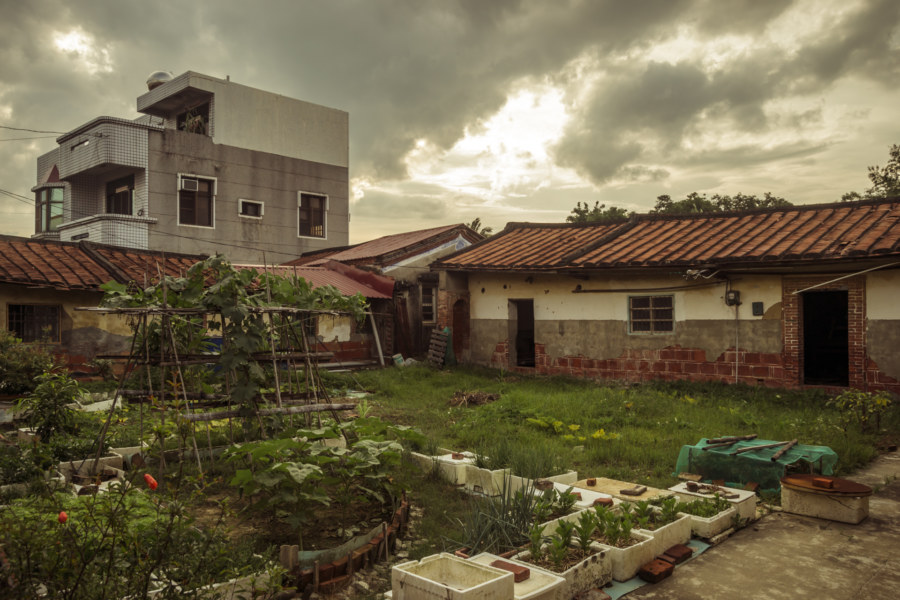
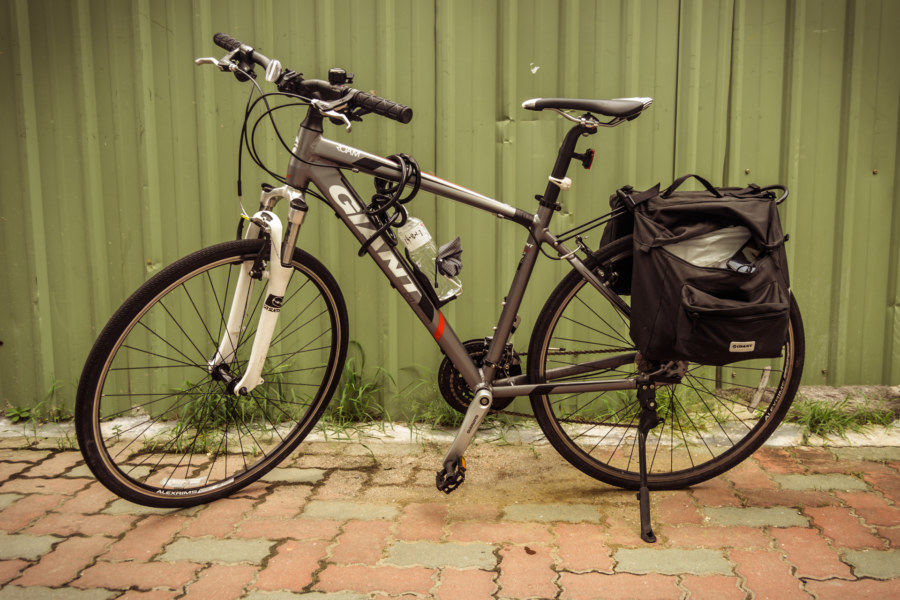
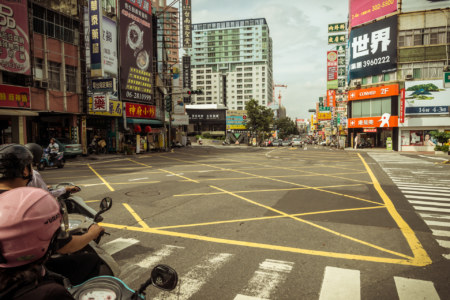
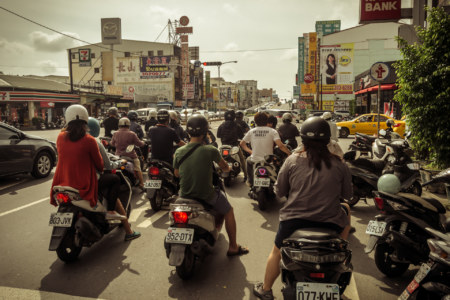
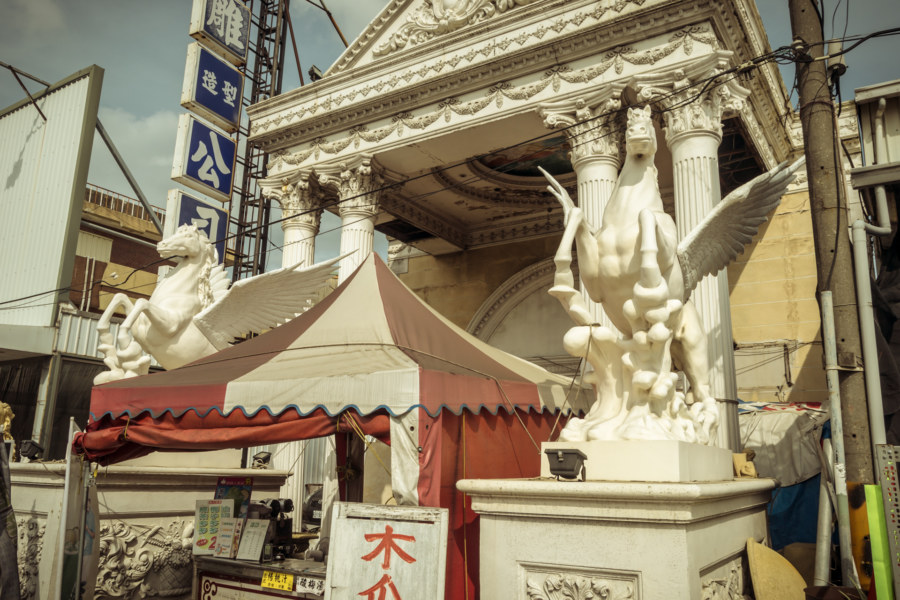
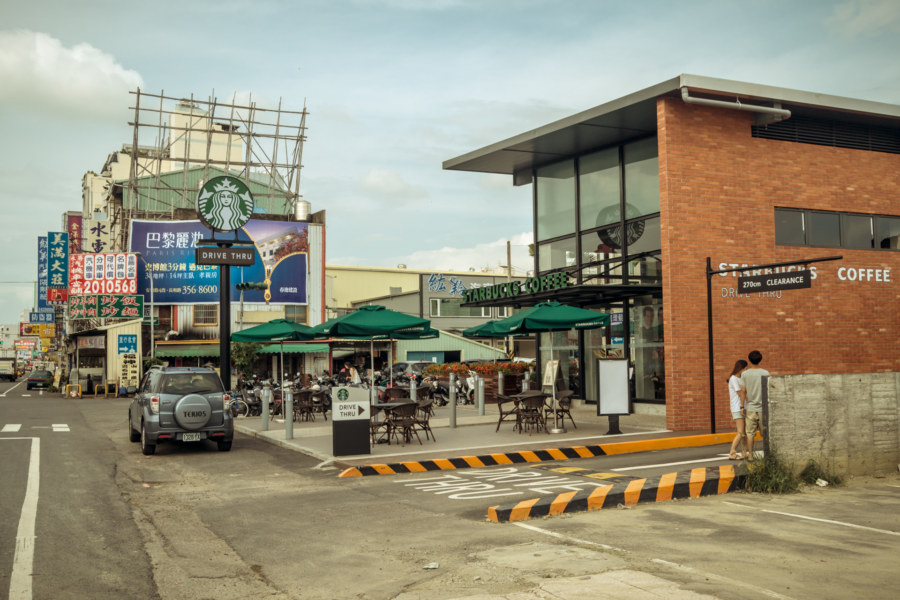
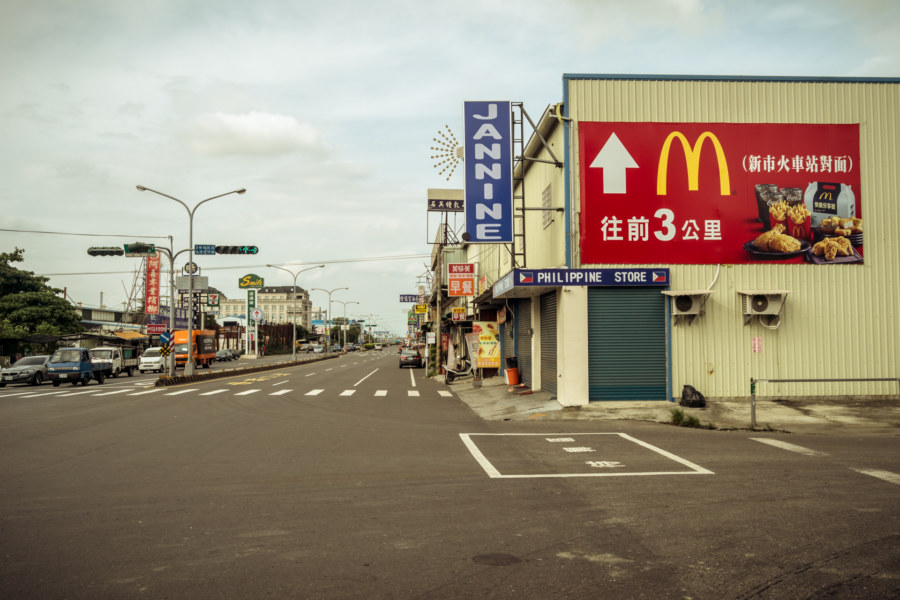
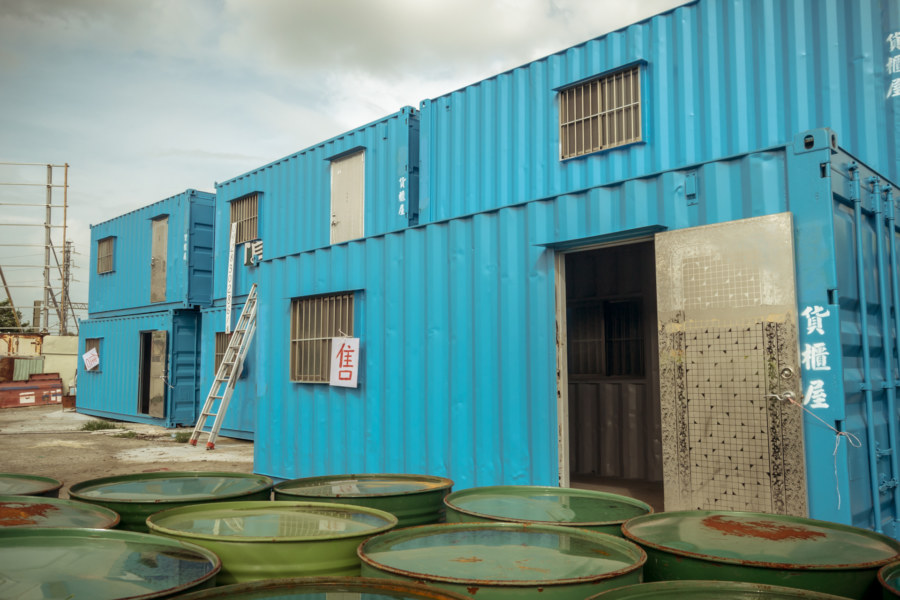
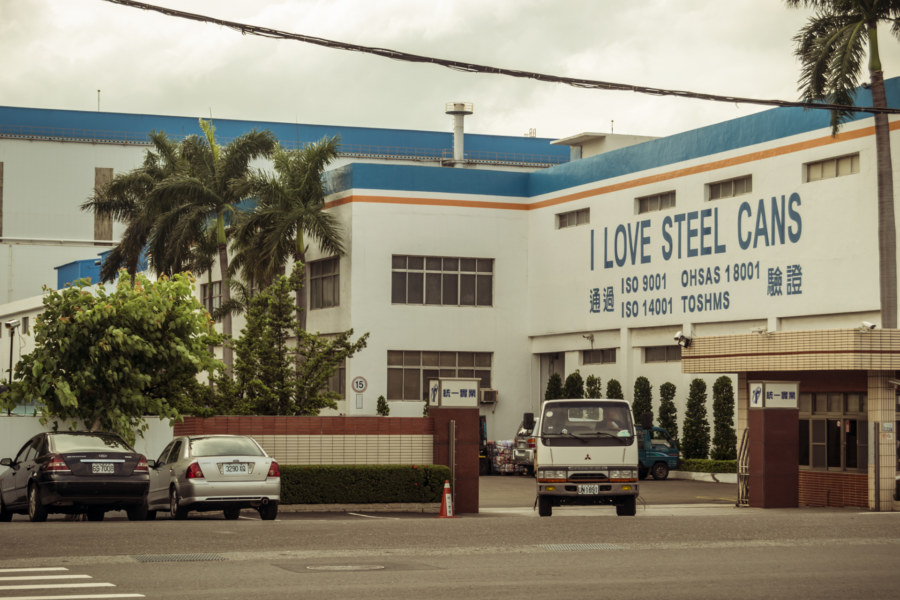
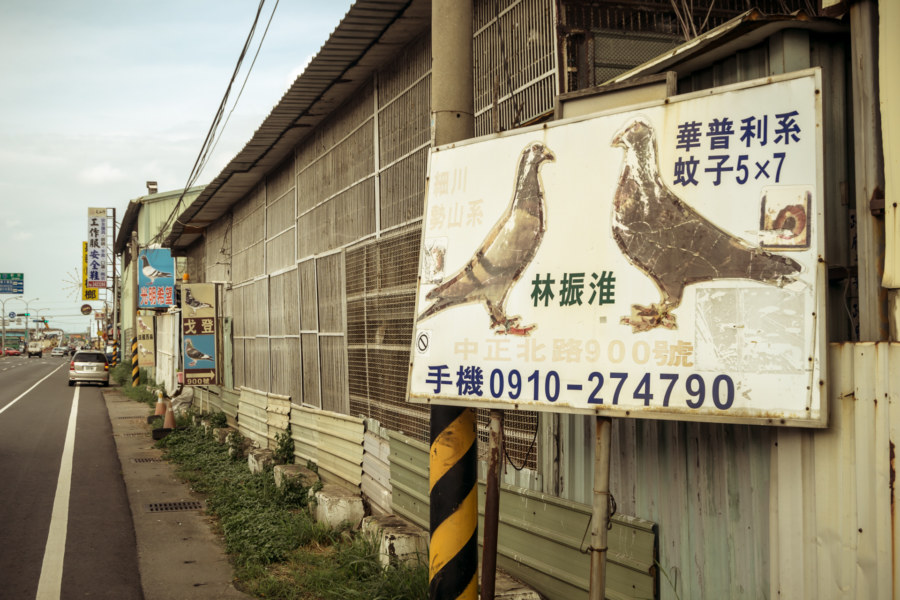
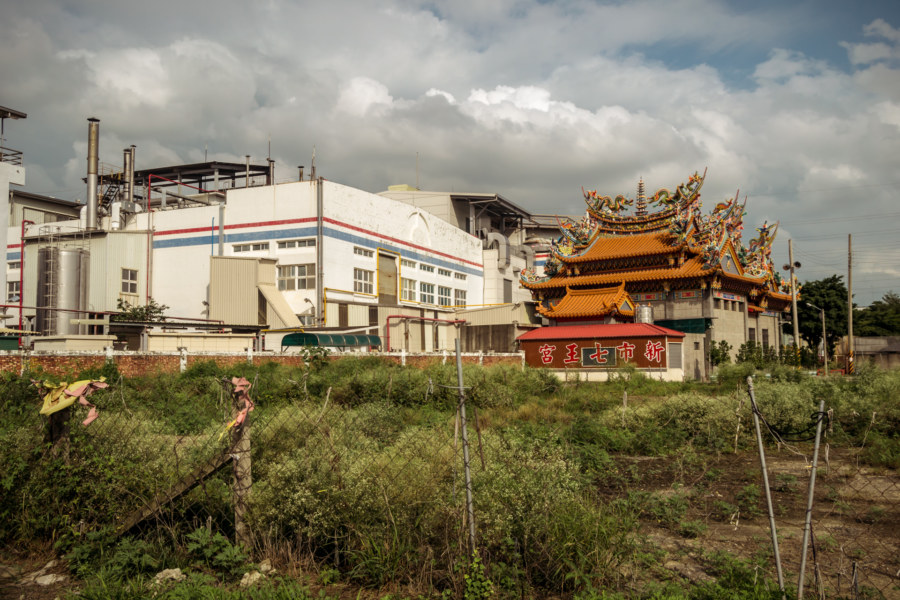
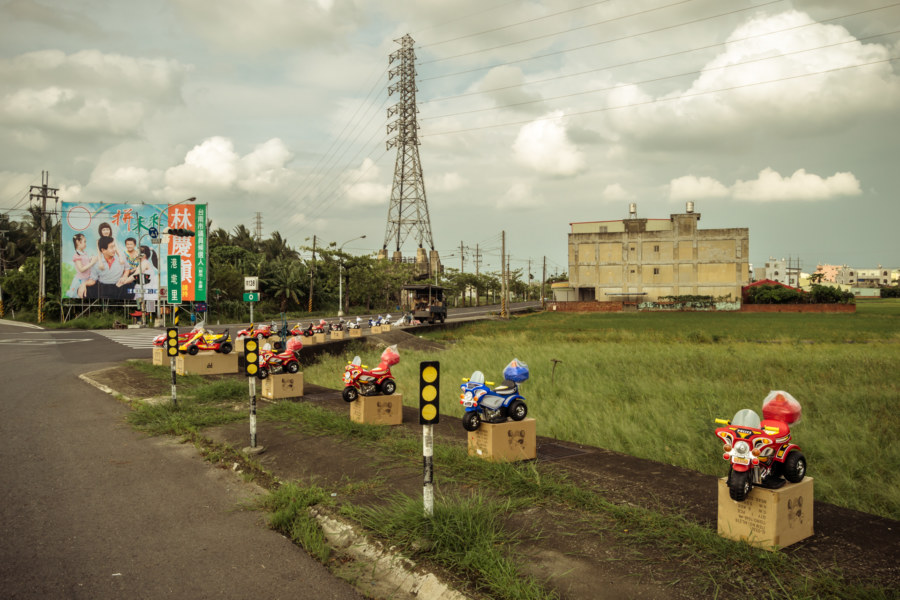
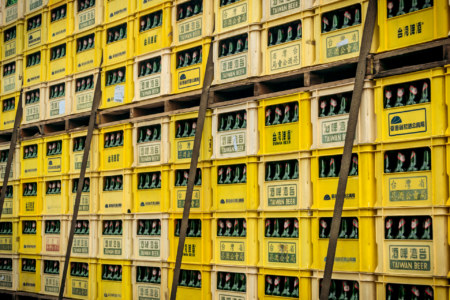
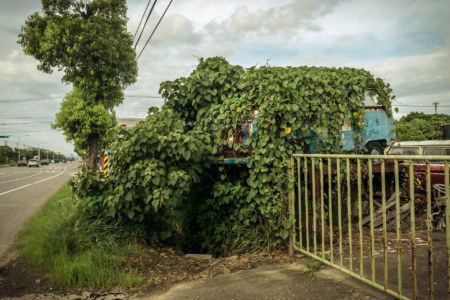
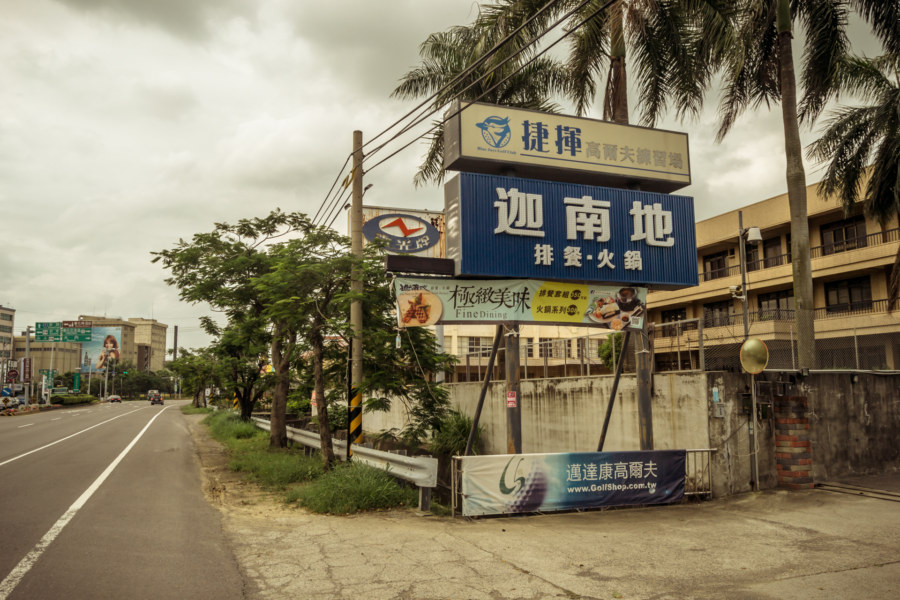
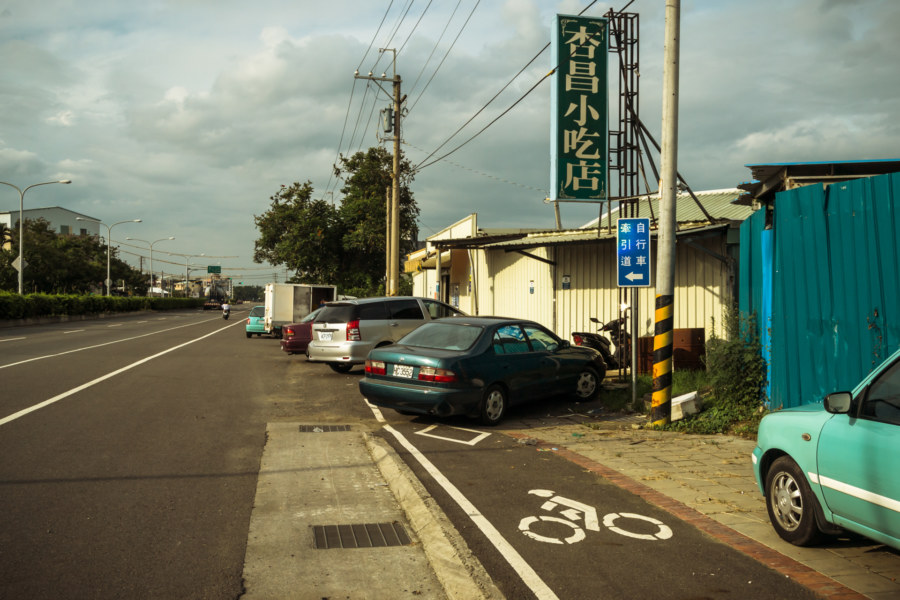
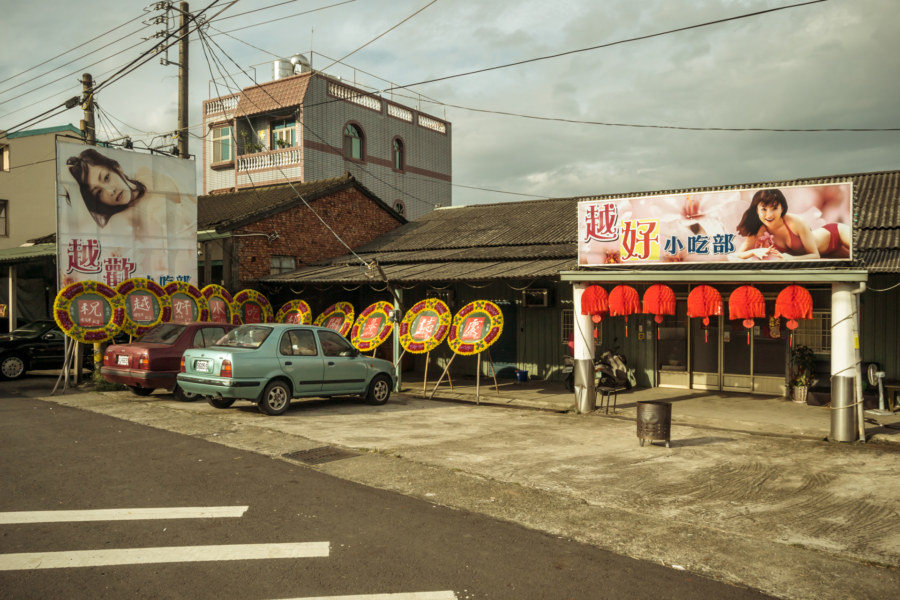
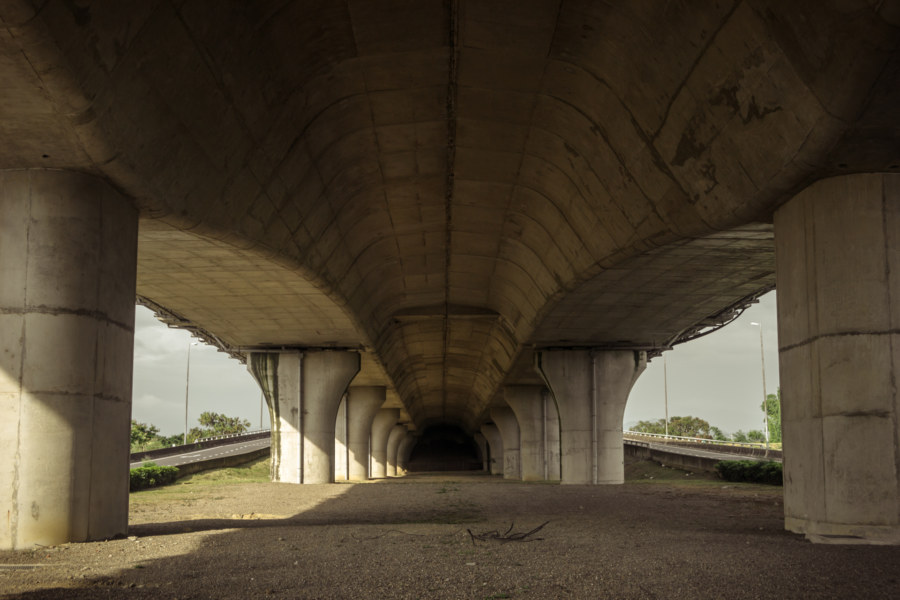
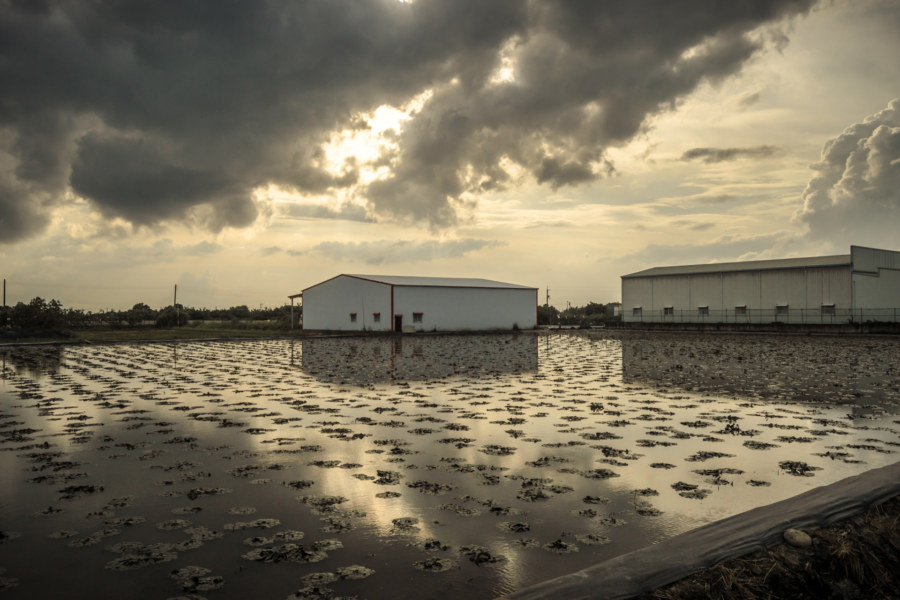
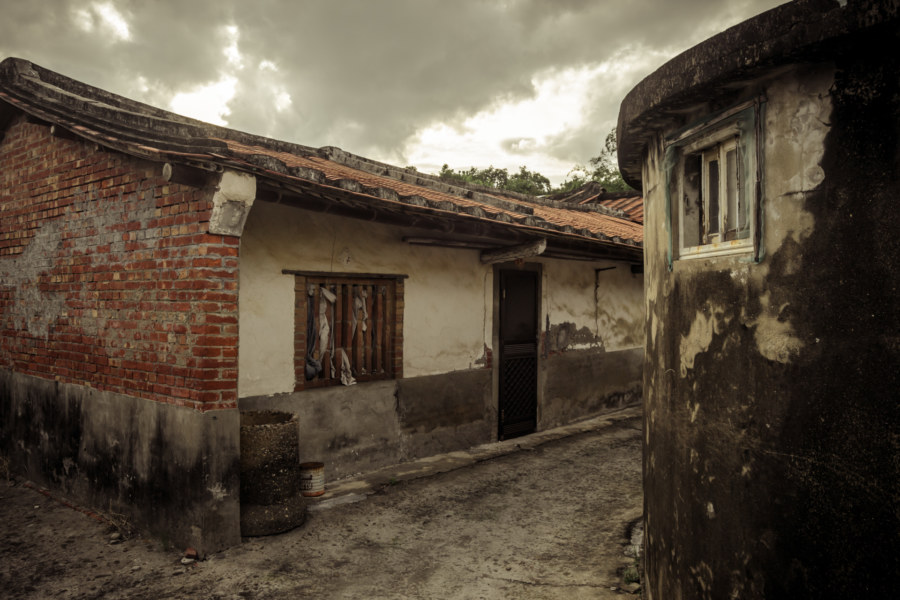
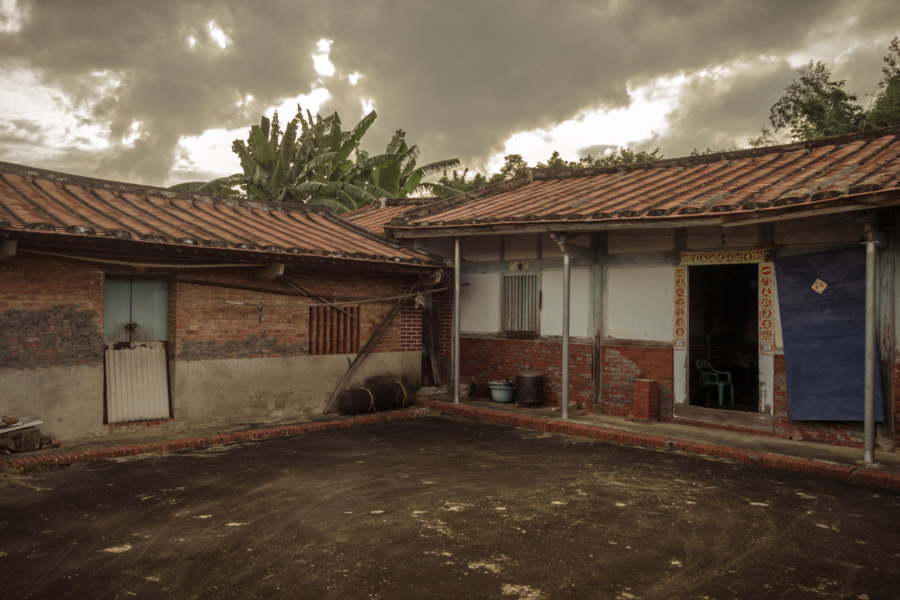
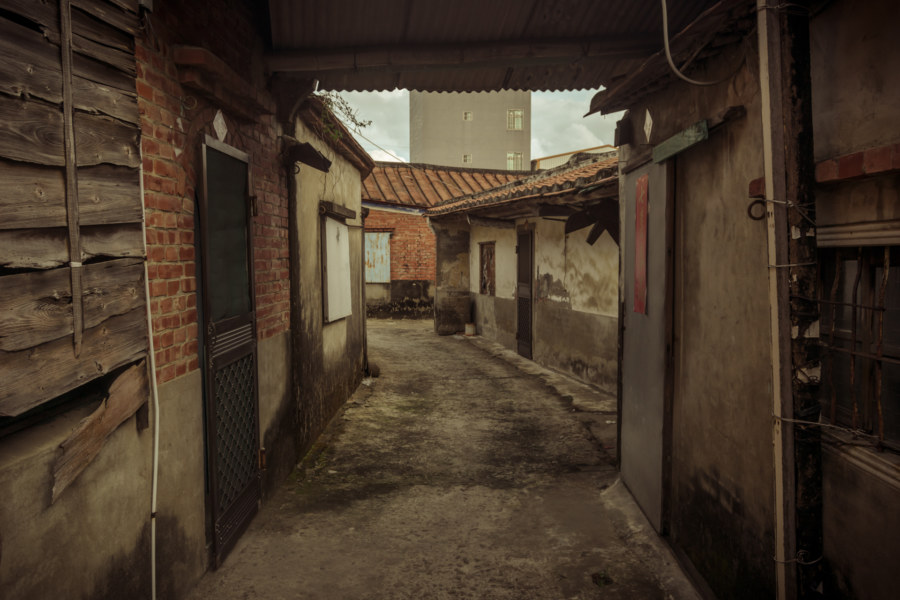
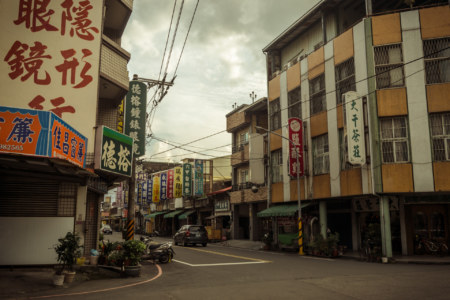
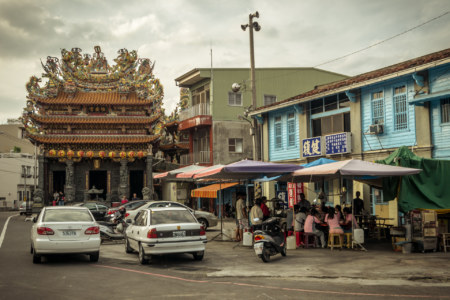
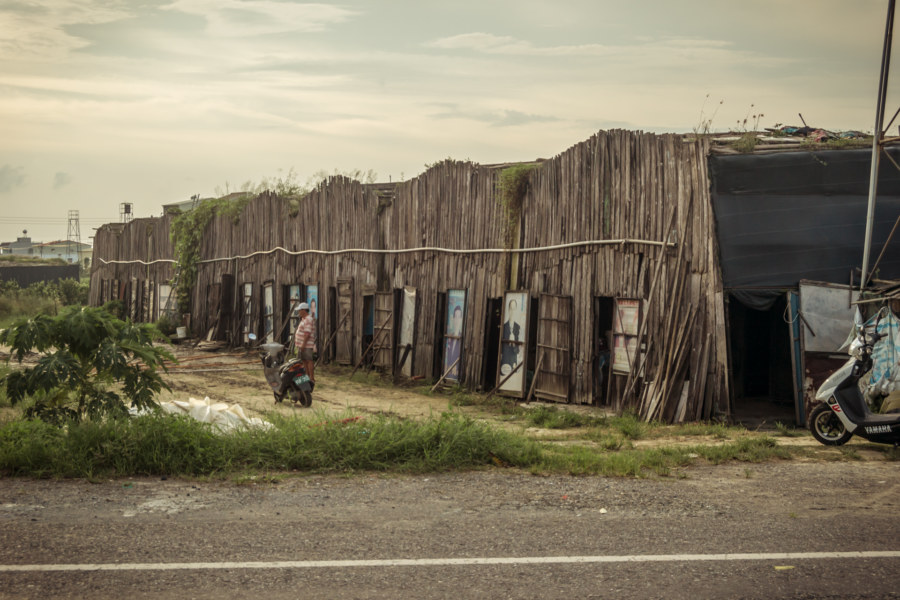
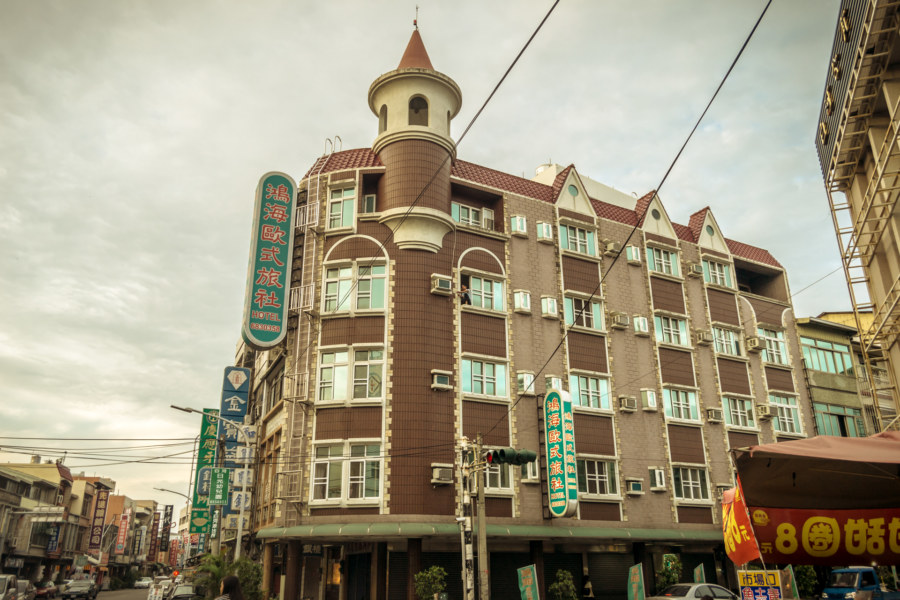
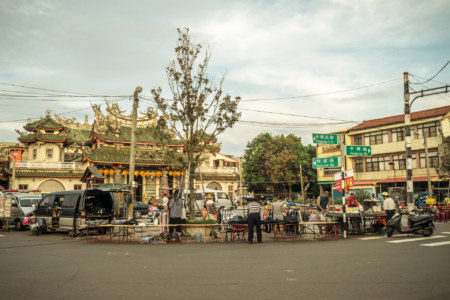
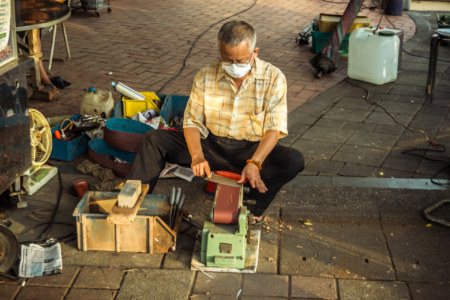
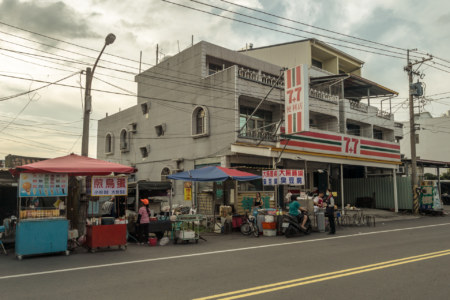
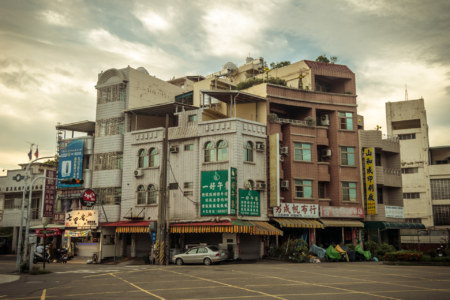
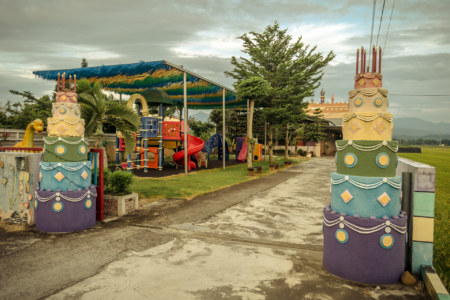
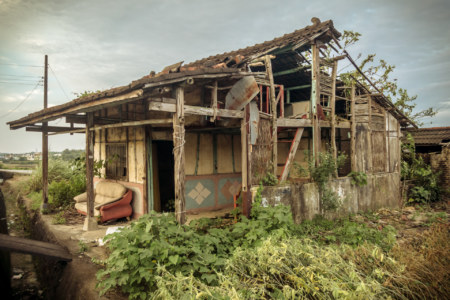
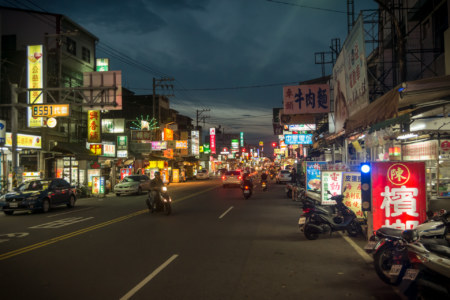
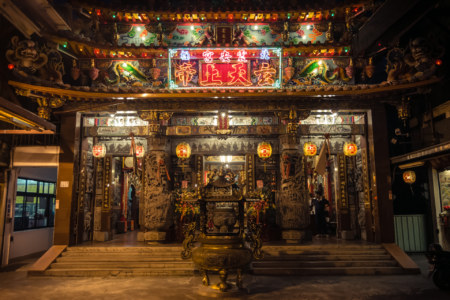
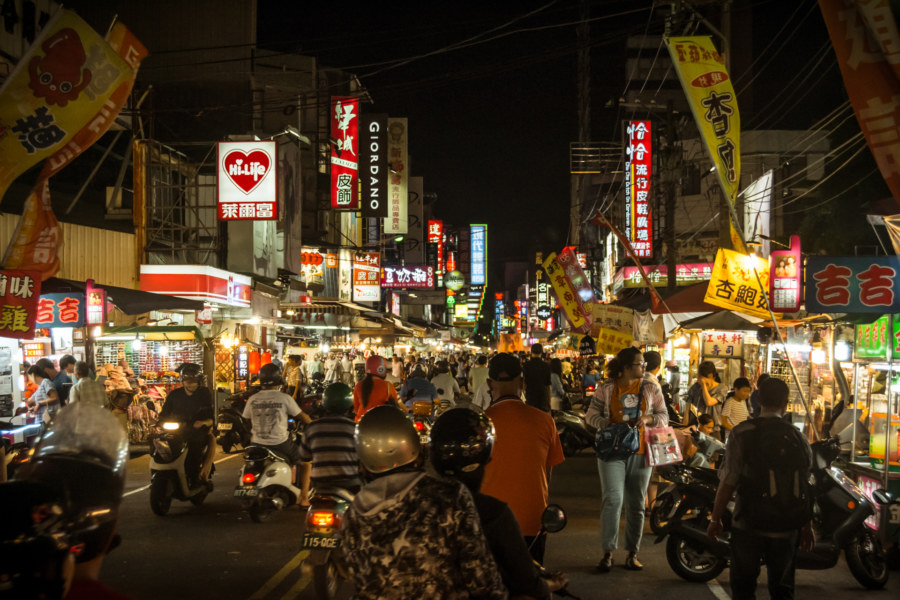
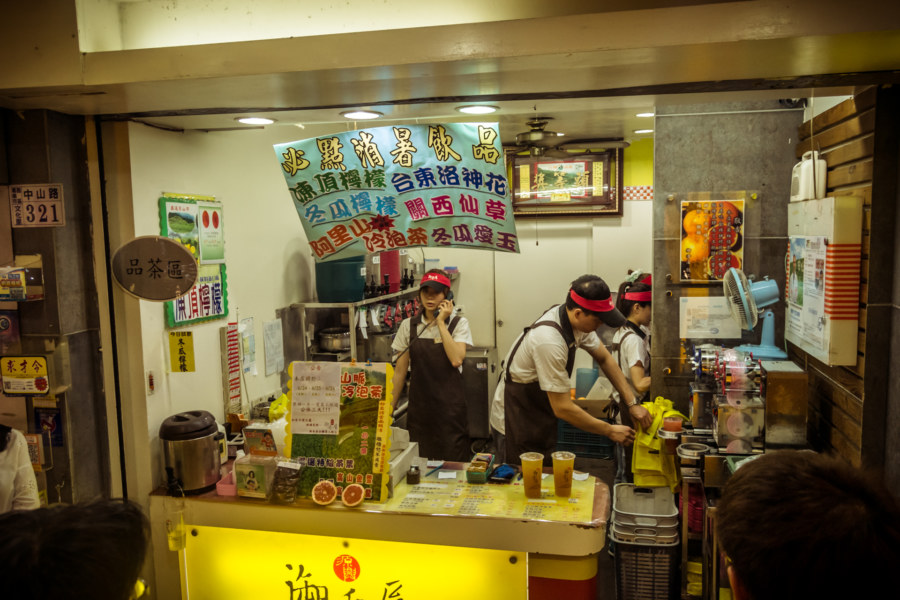
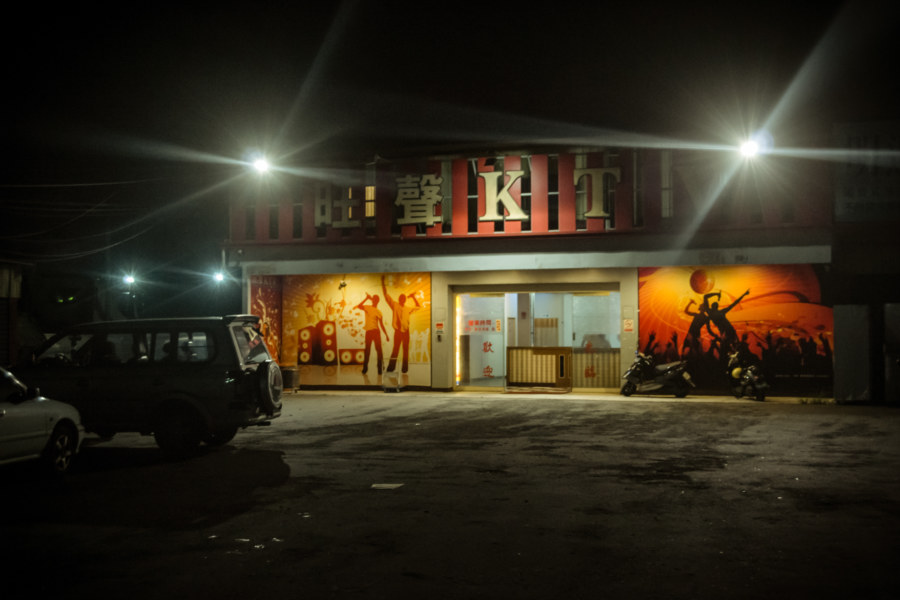
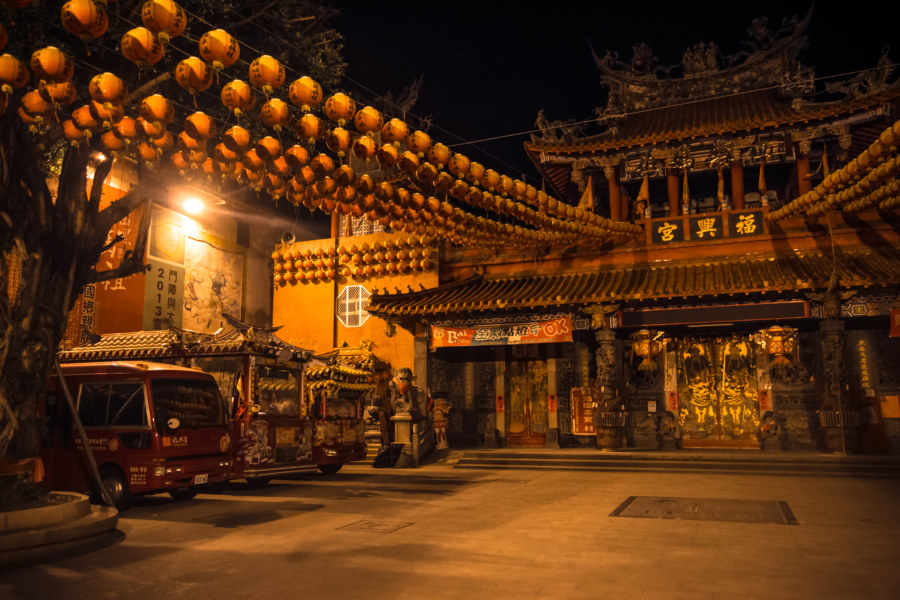
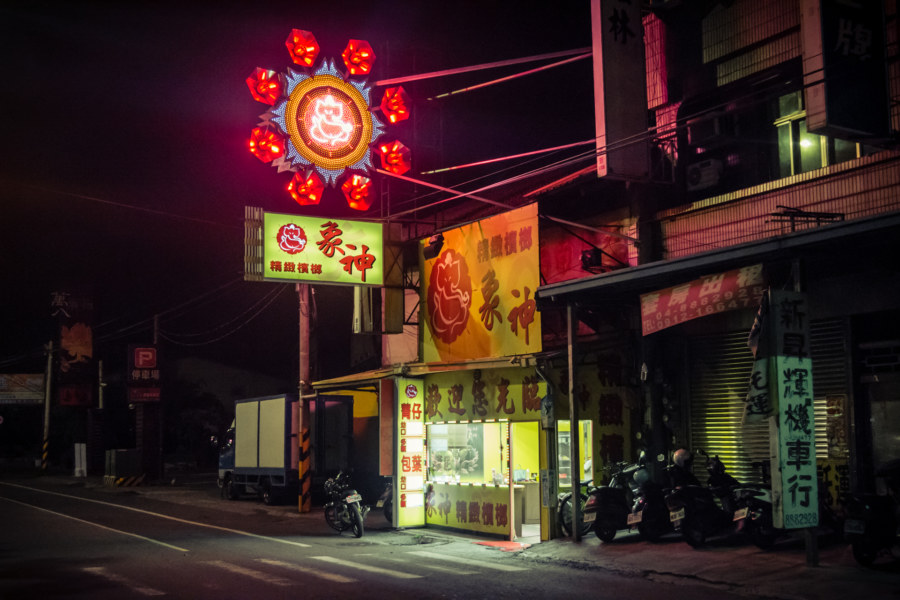
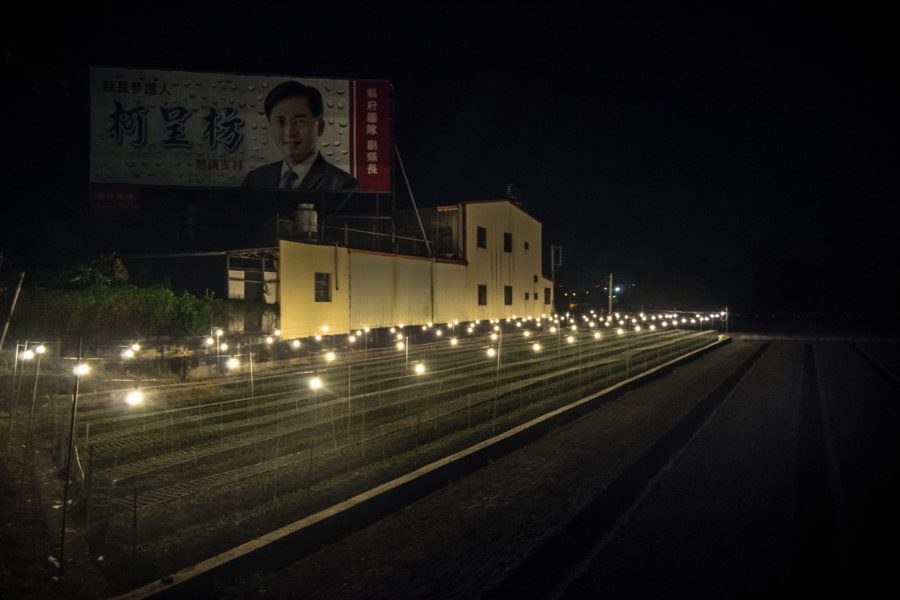
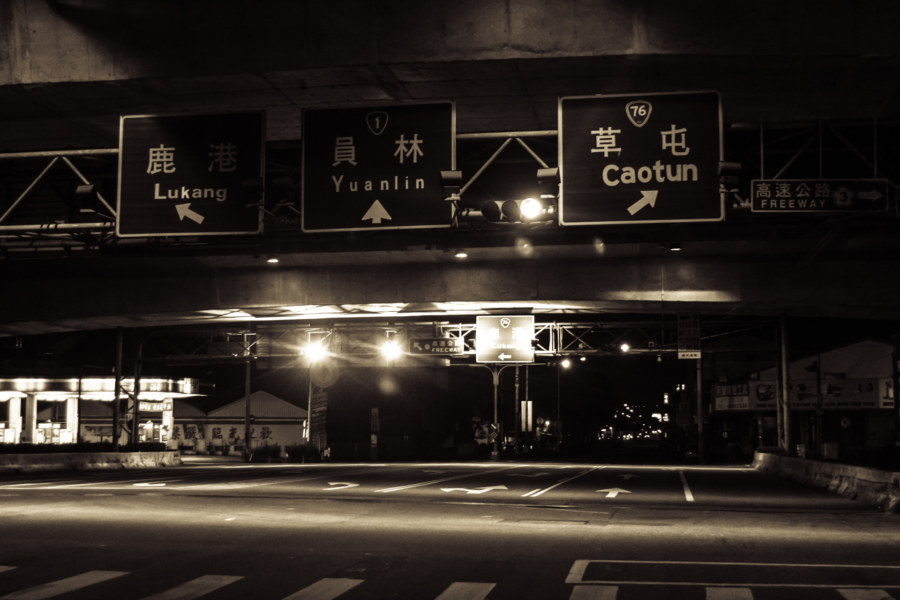
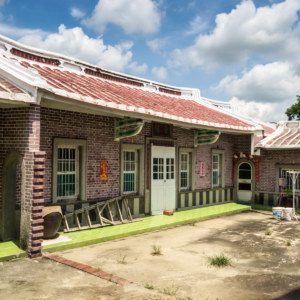
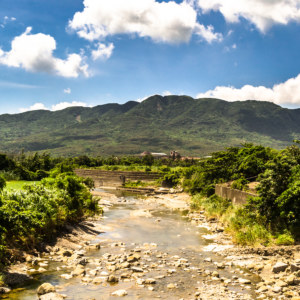
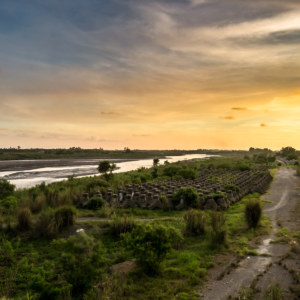
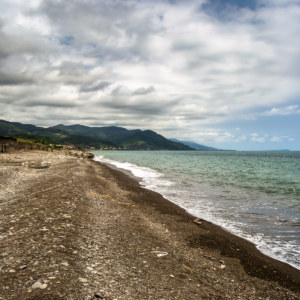
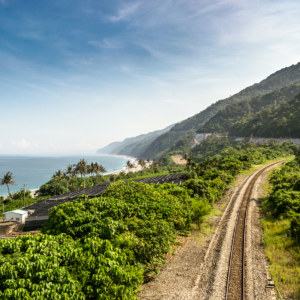
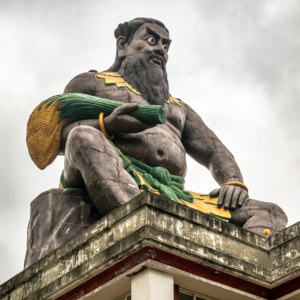
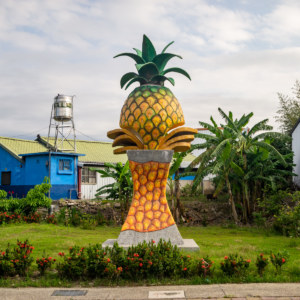
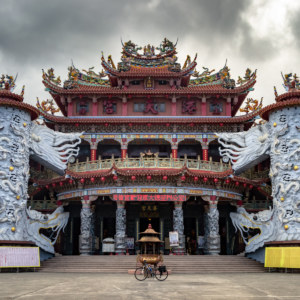
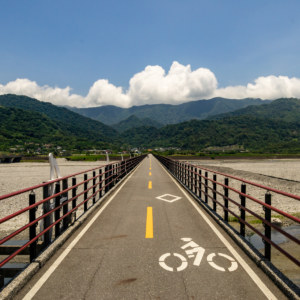
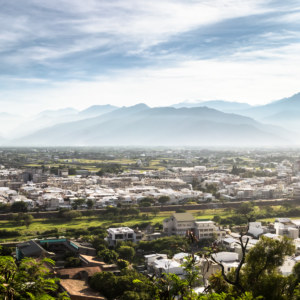
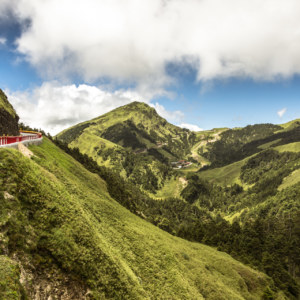
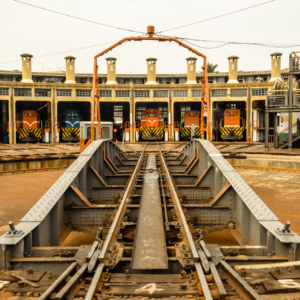
Hi, i stumbled upon ur blog via reddit. Am intrigued by the abandoned/ruin posts, i see them all the time, abundant as them roaming blk street dogs outside of citylimits. Just a quick q, how do u plan out thr bike routes? Can u recommend a good site/paper specifically on bike routes? Oh, love ur blog
謝謝你! I don’t do a lot of planning when I ride. Mostly I make reference to Google Maps on my phone as I’m riding… though it is often the case that my phone runs out of battery and I simply navigate the old-fashioned way, using street signs and such.
Great entry. Love the blog. Very interesting read, perhaps one of the most extensive Taiwan travel blog I’ve come across.
Epic ride! The “wasteful” lights in the field are to accelerate growth, most probably. Xiluo is a nice little town and I want to get back there, too.
Anyone who doesn’t know Taiwan will like to travel the island very much when reading your ride logs accidentally. I can even feel sense of your humor word by word. One day, you can publish a book, it’s will be inspiring. Am still wandering thru your ride along Taiwan, great job,dude.